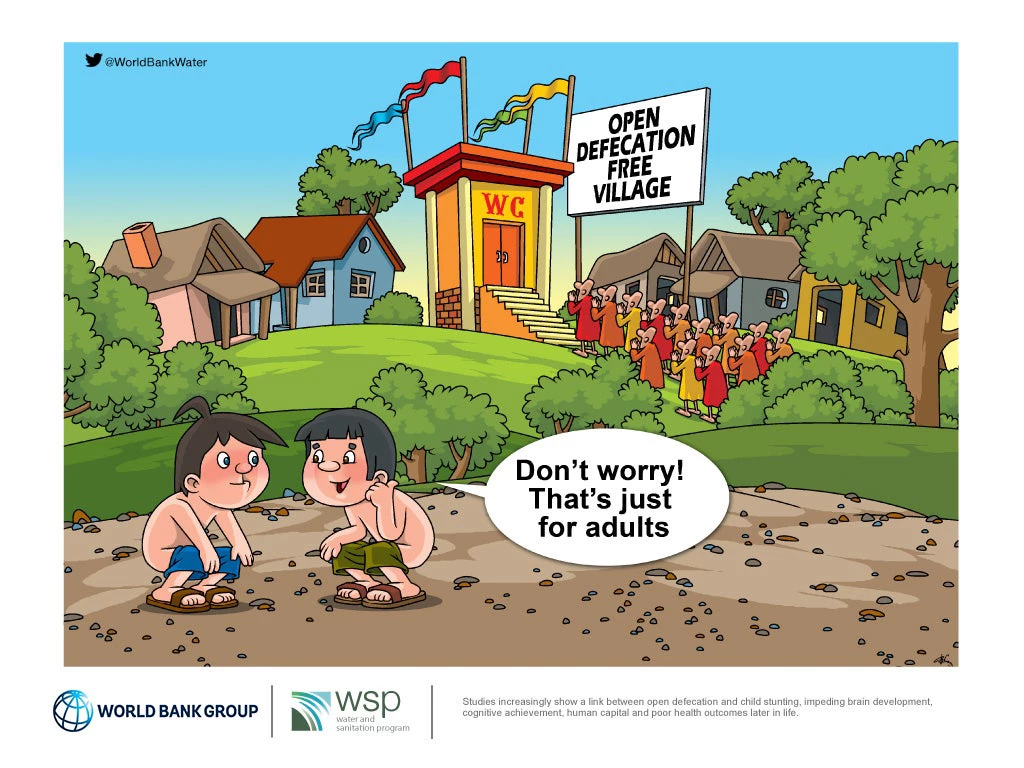Imagine you are a busy mother scrubbing your laundry next to the public water stand near your yard. You realize your two year old — who is playing in the dirt — has to go to the toilet. What do you do? Chances are good you might just let them go on the ground somewhere nearby.
According to a recent analysis by the United Nations Children Fund (UNICEF) and the World Bank Global Water Practice's Water and Sanitation Program (WSP) in key countries, over 50 percent of households with children under age three reported that the feces of their children were unsafely disposed of the last time they defecated. What this really means is that children are literally pooping where they are and their feces are left there, in the open. Meanwhile, the feces of other children in the neighborhood are put or rinsed in a ditch or drain, or buried or thrown into solid waste streams that keep the feces near the household environment.
The analysis found that even in households with access to toilets or latrines that meet global “improved” sanitation standards, sometimes child feces are simply left in the open. For example in India, even in the 23 percent of households that have improved sanitation, 56 percent of households reported that the feces of their children were unsafely disposed. In almost every country, the feces of children under age three are less likely to be safely disposed of than those of the general population. Not surprisingly, the analysis also found that the burden of disposal of child feces is left to women. Lastly, higher rates of unsafe child feces disposal were found in poor, rural households with the youngest children.
Why should we care?
Children’s feces left in the open near where young children come into contact, play and in some cases occasionally eat dirt may seem disgusting to some, but there are common beliefs that the feces of infants and young children are not harmful. Unfortunately, children’s feces could be more risky than adults’ feces, due to a higher prevalence of pathogens. While very little research has been done on the health impact of the unsafe disposal of child feces, we’ve seen a few studies showing that poor child feces management can result in substantial health impacts in children, including a higher prevalence of diarrheal disease, intestinal worms, enteropathy, malnutrition, and death. While more studies are needed, the Child Health Epidemiology Reference Group (CHERG) has concluded the data was “strongly suggestive” that safe stool disposal has a protective effect[i].
What can you do about it?
Most programs aiming to reduce the burden of diarrhea or stunting do not address the behavioral determinants of proper child feces disposal. Even programs aiming to change the sanitation habits of adults often forget to address the needs of young children — even if the impact of their intervention is ultimately measured as diarrhea or stunting effects on children. In the era of the Sustainable Development Goals, more attention will need to be paid to this issue if open defecation is to be eliminated by 2030. To learn more about child feces disposal practices in specific countries, please check out the individual country Child Feces Disposal profiles available at: http://www.wsp.org/childfecesdisposal or read the research summary here.
and Recommendations for Filling the Evidence Gaps. Unpublished. London School of Hygiene and Tropical Medicine.





Join the Conversation